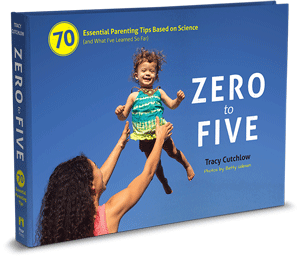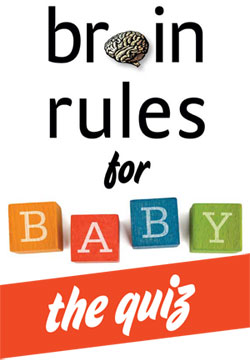Happy baby
How to head off temper tantrums
Chapter excerpt
“I don’t like it,” the 3-year-old muttered to herself as the guests left. Miserable throughout her older sister’s birthday party, she was now growing angry. “I want Ally’s doll, not this one!” Her parents had bought her a consolation present, but the strategy went down like a bomb. The girl threw her doll to the floor. “Ally’s doll! Ally’s doll!” She began to cry. You can imagine a parent making any of several choices in the face of this bubbling brew.
“You seem sad. Are you sad?” is what the girl’s dad said. The little girl nodded, still angry, too. The dad continued. “I think I know why. You’re sad because Ally’s gotten all the presents. You only got one!” The little girl nodded again. “You want the same number and you can’t have it, and that’s unfair and that makes you sad.” The dad seemed to be pouring it on. “Whenever somebody gets something I want and I don’t, I get sad, too.” Silence.
Then the dad said the line most characteristic of a verbalizing parent. “We have a word for that feeling, honey,” he said. “Do you want to know what that word is?” She whimpered, “OK.” He held her in his arms. “We call it being jealous. You wanted Ally’s presents, and you couldn’t have them. You were jealous.” She cried softly but was beginning to calm down. “Jealous,” she whispered. “Yep,” Dad replied, “and it’s an icky feeling.” “I been jealous all day,” she replied, nestling into her daddy’s big strong arms.
This big-hearted father is good at a) labeling his feelings and b) teaching his daughter to label hers. He knows what sadness in his own heart feels like and announces it easily. He knows what sadness in his child’s heart looks like, and he is teaching her to announce it, too. He is also good at teaching joy, anger, disgust, concern, fear—the entire spectrum of his little girl’s experience.
Research shows that this labeling habit is a dominant behavior for all parents who raise happy children. Kids who are exposed to this parenting behavior on a regular basis become better at self-soothing, are more able to focus on tasks, and have more successful peer relationships. Sometimes knowing what to do is tougher than knowing what to say. But sometimes saying is all that’s needed.
Notice in the story that as the dad addressed his daughter’s feelings directly, the little girl began to calm down. This is a common finding; you can measure it in the laboratory. Verbalizing has a soothing effect on the nervous system of children. (Adults, too.) Thus, the Brain Rule: Labeling emotions calms big feelings.
Here’s what we think is going on in the brain. Verbal and nonverbal communication are like two interlocking neurological systems. Infants’ brains haven’t yet connected these systems very well. Their bodies can feel fear, disgust, and joy way before their brains can talk about them. This means that children will experience the physiological characteristics of emotional responses before they know what those responses are. That’s why large feelings are often scary for little people (tantrums often self-feed because of this fear). That’s not a sustainable gap. Kids will need to find out what’s going on with their big feelings, however scary they seem at first. They need to connect these two neurological systems.
Researchers believe that learning to label emotions provides the linkage. The earlier this bridge gets constructed, the more likely you are to see self-soothing behaviors, along with a large raft of other benefits. Researcher Carroll Izard has shown that in households that do not provide such instruction, these nonverbal and verbal systems remain somewhat disconnected or integrate in unhealthy ways. Without labels to describe the feelings they have, a child’s emotional life can remain a confusing cacophony of physiological experiences.
Practical tip #20: Speculate on another’s point of view
In front of your children, verbally speculate about other people’s perspectives in everyday situations. You can wonder why the person behind you in line at a grocery is so impatient or what the joke is when a stranger talking on a cell phone laughs. It’s a natural way to practice seeing other people’s points of view—the basis of empathy.
 Happy baby rules
Happy baby rules
- Seeds: Make good friends but keep the old Soil: Labeling emotions calms big feeling

If you liked the why of Brain Rules
for Baby, you’ll love the how-to of
Zero to Five:
70 Essential Parenting Tips
Based on Science (And What
I’ve Learned So Far).
New from Pear Press.


